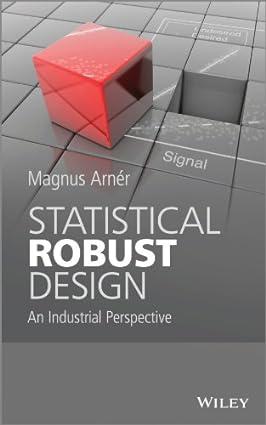1.2 Consider Example 1.1 where a bar is attached to a wall. Denote the end point position...
Question:
1.2 Consider Example 1.1 where a bar is attached to a wall. Denote the end point position (yx, yy), the length of the bar L, the attachment point in the wall Z, and the position of the support (distance from wall) x. For simplicity, assume that
????z = 0 and that the height of the support always takes value zero.
(a) Sketch the variance of Yy as a function of the support position x by using Equation (1.2). Let x be in the range 0.2L to 0.95L, where L is the length of the bar. What happens when x → L?
(b) Use trigonometry to prove Equation (1.2) and to derive the function Yx =
g(Z, x) for the abscissa coordinate of the end point position.
(c) Use Gauss’ approximation formulas to obtain the mean and variance of Yx and reflect on the result. Does the result make sense? If not, explain why!
(d) Use a higher order Taylor expansion to and sketch the variance of Yx as a function of the support position.
Step by Step Answer:

Statistical Robust Design An Industrial Perspective
ISBN: 9781118625033
1st Edition
Authors: Magnus Arner




